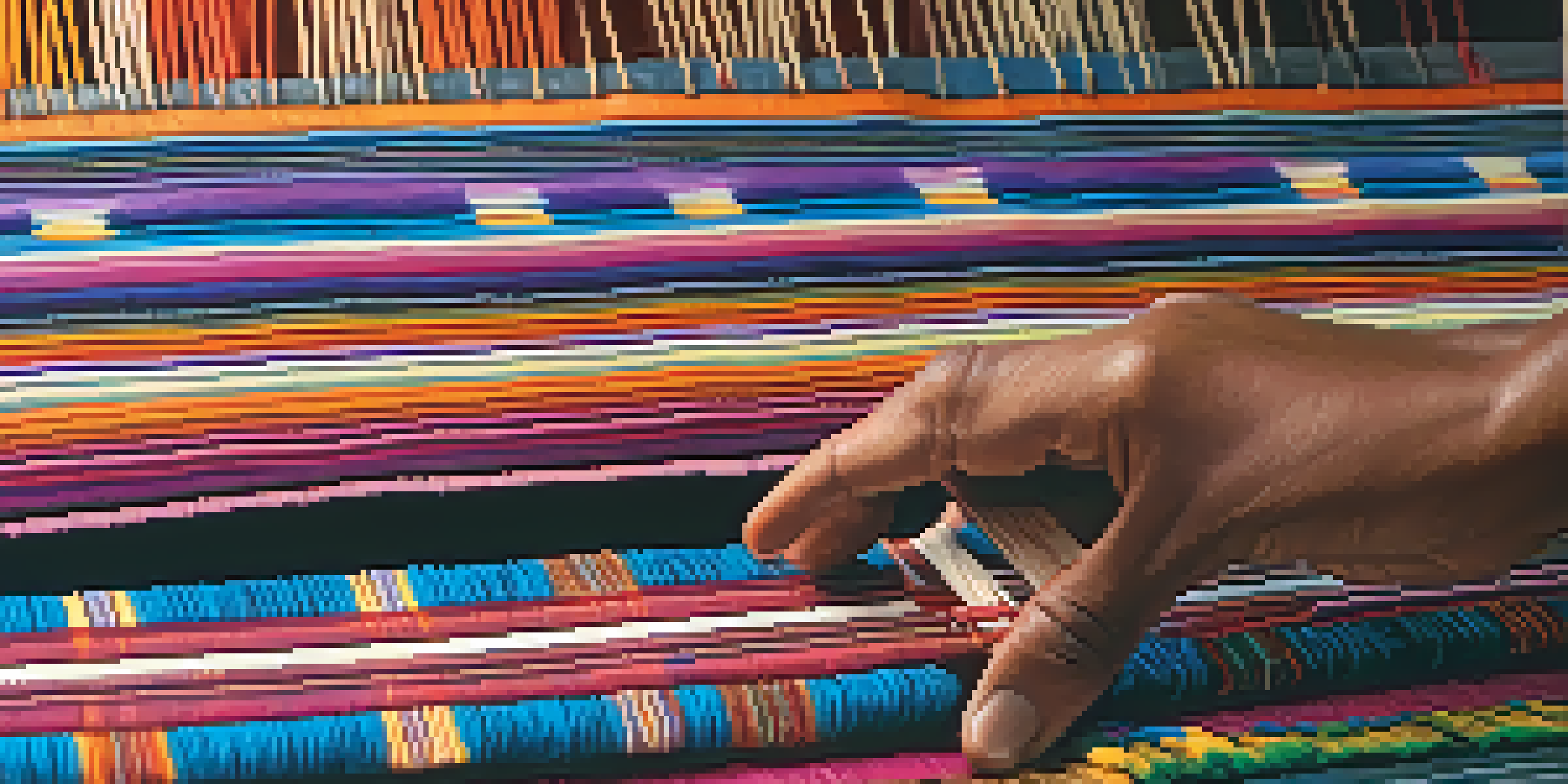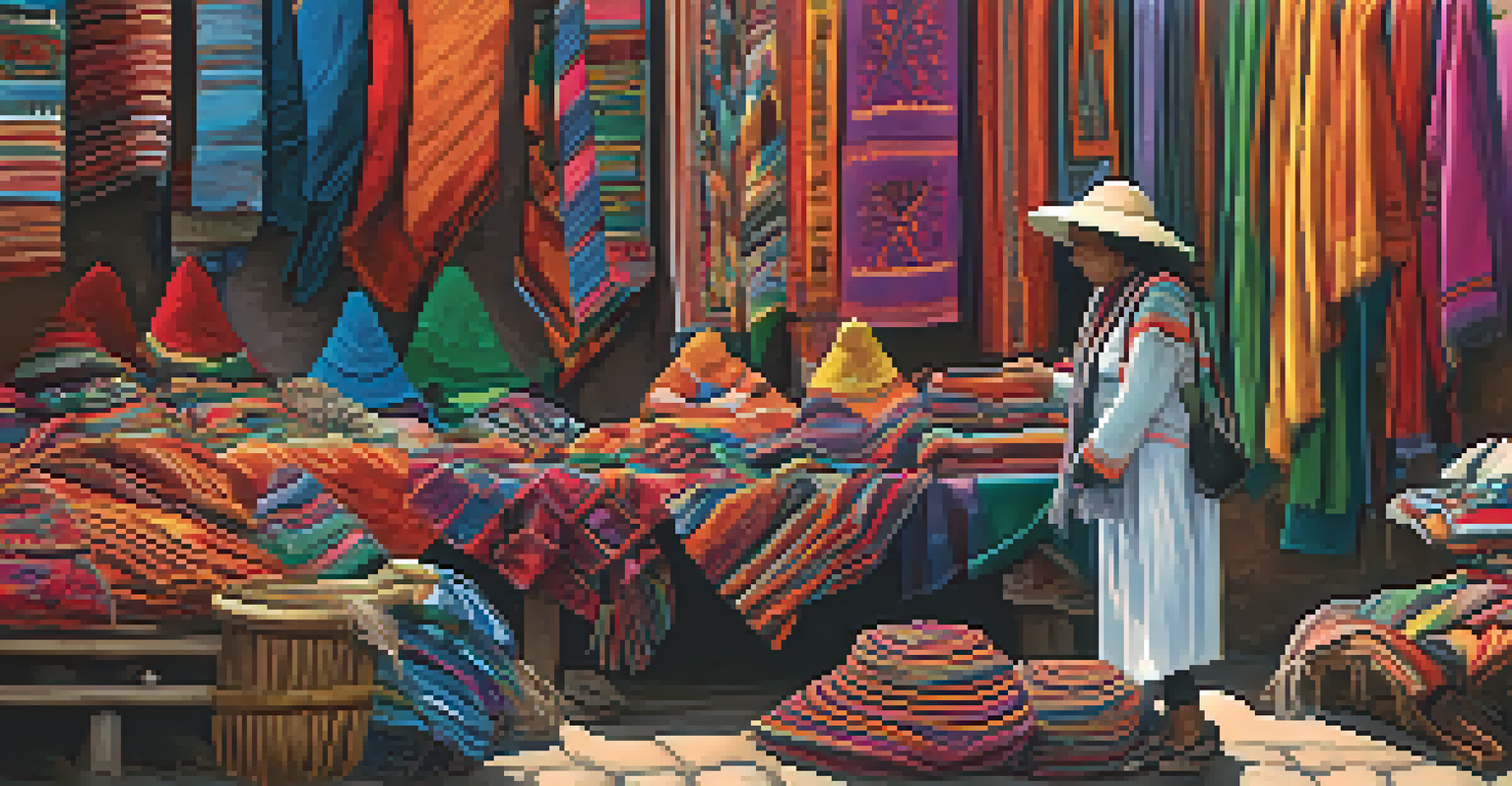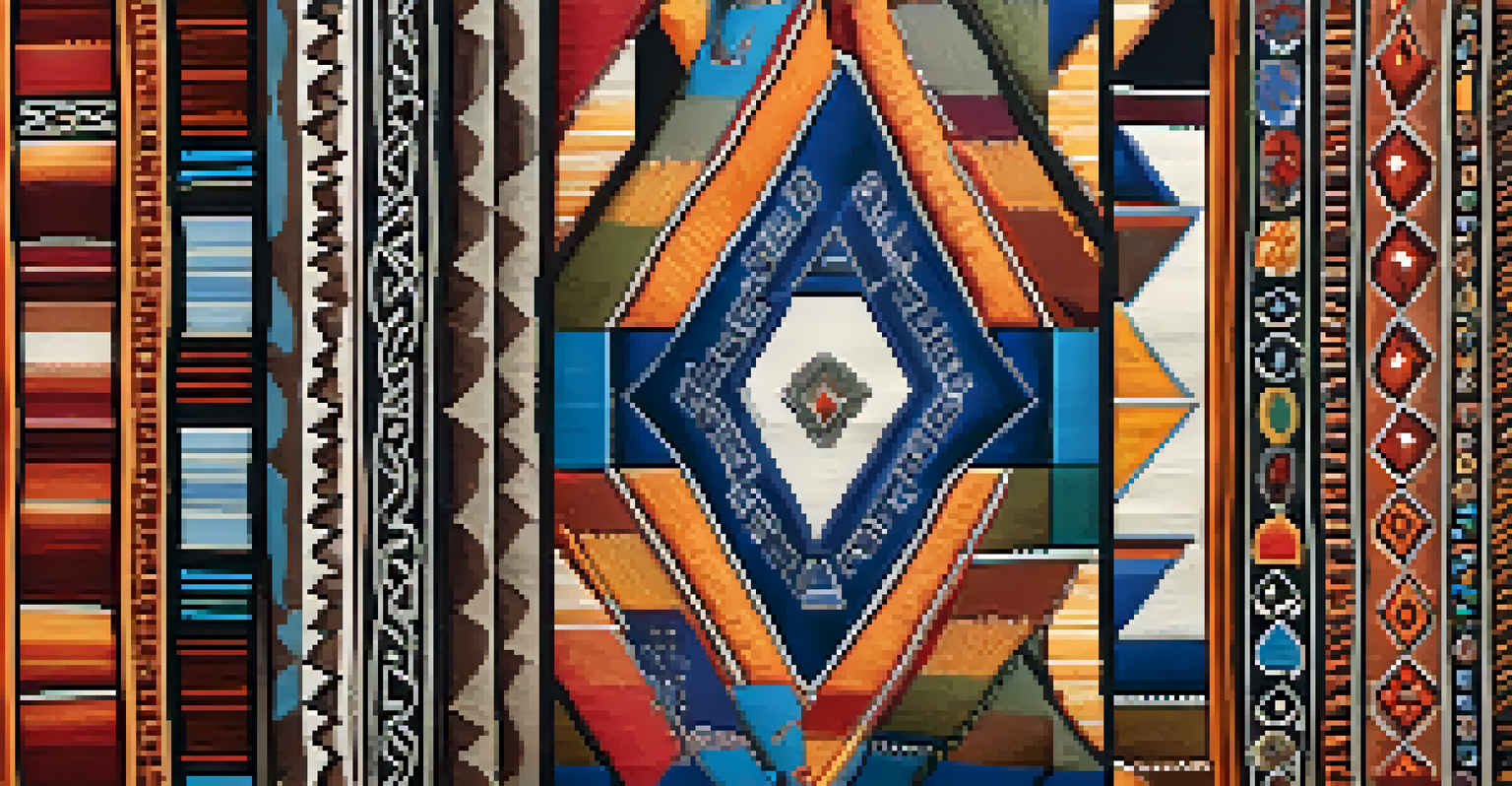Exploring the Rich Heritage of Peruvian Textile Artisans

The Historical Roots of Peruvian Textile Artistry
Peruvian textile art has deep historical roots, dating back thousands of years to pre-Incan civilizations. The Incas and their predecessors used textiles not just for clothing, but as a means of communication, often conveying stories and social status through intricate patterns. This rich history is still evident today, as many techniques and designs have been passed down through generations.
Textiles are a reflection of the culture and history of a people, telling stories that words cannot express.
Each region in Peru boasts its own unique style and weaving techniques, influenced by local cultures and available resources. For example, the highland communities often use alpaca wool, known for its warmth and durability, while coastal artisans may rely on cotton. This diversity not only enriches the textile landscape but also reflects the varied lifestyles and environments of the Peruvian people.
Today, these traditional methods are celebrated and preserved by artisans who blend ancient practices with contemporary designs. This fusion creates a vibrant tapestry of creativity that honors the past while embracing the future, ensuring that the heritage of Peruvian textiles remains alive and relevant.
Understanding Traditional Techniques in Textile Production
The art of Peruvian textiles involves numerous traditional techniques, including weaving, dyeing, and embroidery. Many artisans still use backstrap looms, which allow them to create intricate patterns by hand. This method requires skill and patience, emphasizing the personal touch that defines each piece.

Natural dyes derived from plants, minerals, and insects are commonly used in the dyeing process, giving textiles rich, vibrant colors. For example, cochineal, a tiny insect, produces a stunning red hue that has been used for centuries. This connection to nature not only enhances the aesthetic appeal of textiles but also promotes sustainability and environmental consciousness.
Heritage Through Textile Artistry
Peruvian textiles reflect a rich history, with techniques and designs passed down through generations, showcasing cultural narratives.
Embroidered elements often tell stories or represent specific cultural symbols, making each piece a unique work of art. By incorporating these techniques, Peruvian artisans not only preserve their heritage but also create textiles that resonate with both local and global audiences.
The Role of Women in Peruvian Textile Artisanship
Women have played a pivotal role in the preservation and evolution of textile arts in Peru. Traditionally, it has been women who pass down weaving techniques to their daughters, ensuring that these skills are not lost over time. As a result, women's influence is not just significant; it is essential to the survival of this art form.
Textiles are the fingerprints of a culture; they carry the stories, the traditions, and the history of a people.
In many communities, women gather to weave together, fostering a strong sense of camaraderie and shared purpose. This social aspect promotes cultural exchange and strengthens community bonds, as they share stories and techniques while working side by side. It’s a beautiful example of how art can bring people together.
Moreover, the rise of fair trade initiatives has empowered many female artisans, allowing them to earn a sustainable income from their craft. This newfound economic independence not only enhances their status in the community but also helps to uplift entire families, creating a ripple effect of positive change.
Sustainable Practices in Modern Textile Art
Sustainability is a crucial component of modern Peruvian textile artistry. Many artisans are committed to using eco-friendly materials, such as organic cotton and natural dyes, to minimize their environmental impact. This focus on sustainability not only attracts conscious consumers but also helps preserve the natural resources that are essential to their craft.
Additionally, the resurgence of traditional weaving techniques contributes to sustainability by promoting local economies and reducing reliance on mass-produced textiles. By choosing handmade items, consumers support artisans directly, helping to keep these age-old practices alive. It's a win-win situation for both the artists and the environment.
Women Empowered in Weaving
Women play a crucial role in preserving textile arts, fostering community bonds, and achieving economic independence through their craft.
Artisans are increasingly aware of the importance of storytelling in their work, using their textiles to communicate messages about environmental stewardship and cultural heritage. This approach not only elevates their art but also fosters a deeper connection with consumers who are looking for meaningful and responsible purchases.
Exploring the Cultural Significance of Patterns
In Peruvian textiles, patterns hold deep cultural significance, often reflecting the beliefs, customs, and histories of various communities. Each design can symbolize particular elements of life, such as fertility, harvest, and spirituality, making textiles a vibrant canvas for storytelling. For example, the 'chakana' or Andean cross is a common motif that represents the connection between the earthly and the divine.
The colors used in these patterns are also laden with meaning, often derived from the natural environment. Bright reds, deep blues, and earthy browns not only create visually stunning pieces but also evoke a sense of place and identity. This intrinsic connection between color, pattern, and culture enriches the appreciation of Peruvian textiles.
By understanding the significance of these patterns, we gain insights into the values and traditions of the cultures that produce them. This deeper appreciation enhances our connection to the artwork, transforming a simple textile into a narrative that speaks to the heart of Peruvian heritage.
The Global Impact of Peruvian Textiles
Peruvian textiles have transcended borders, gaining recognition and appreciation in international markets. Artisans have started to collaborate with designers and brands worldwide, bringing their unique craftsmanship to a global audience. This exposure not only elevates their work but also fosters cross-cultural dialogue and understanding.
With the rise of ethical fashion, more consumers are seeking out handmade textiles that tell a story. Peruvian artisans are perfectly positioned to meet this demand, as their work embodies authenticity and craftsmanship. By choosing these textiles, consumers contribute to a more sustainable and equitable fashion industry.
Sustainability in Modern Practices
Artisans prioritize eco-friendly materials and traditional techniques, ensuring that their textile art remains both culturally significant and environmentally conscious.
Moreover, this global interest sparks a renewed sense of pride among artisans, encouraging them to innovate while staying true to their roots. As they blend modern trends with traditional techniques, they ensure that Peruvian textile art continues to evolve and thrive in the contemporary marketplace.
Preserving the Future: Challenges Faced by Artisans
Despite the vibrant culture surrounding Peruvian textiles, artisans face several challenges in preserving their craft. Globalization has led to the mass production of cheap textiles, making it difficult for artisans to compete. This economic pressure can dilute the authenticity and quality that define their work.
Additionally, the younger generation may be drawn to urban lifestyles and modern careers, leading to a decline in interest in traditional weaving practices. To counter this, many communities are implementing educational programs to teach younger individuals about their heritage and the value of these skills. By instilling a sense of pride in their cultural roots, they hope to inspire future artisans.

Efforts are also being made to promote fair trade practices and raise awareness about the importance of supporting local artisans. By fostering a deeper appreciation for Peruvian textiles, we can help ensure that these incredible traditions are preserved for generations to come.